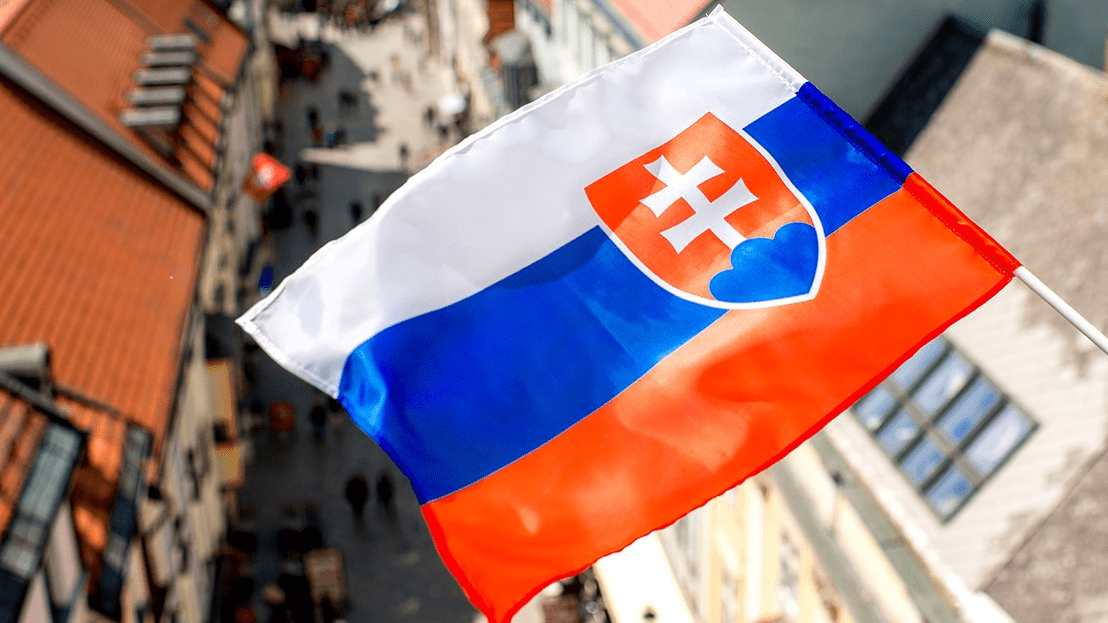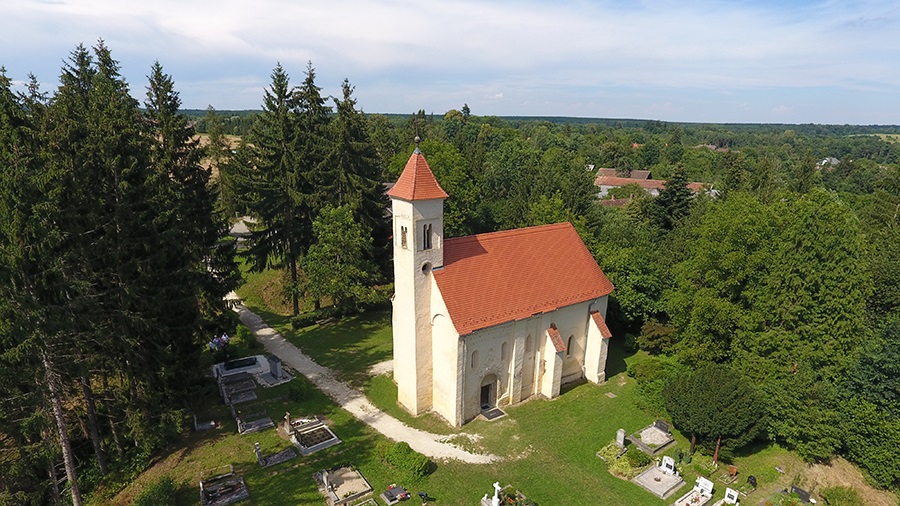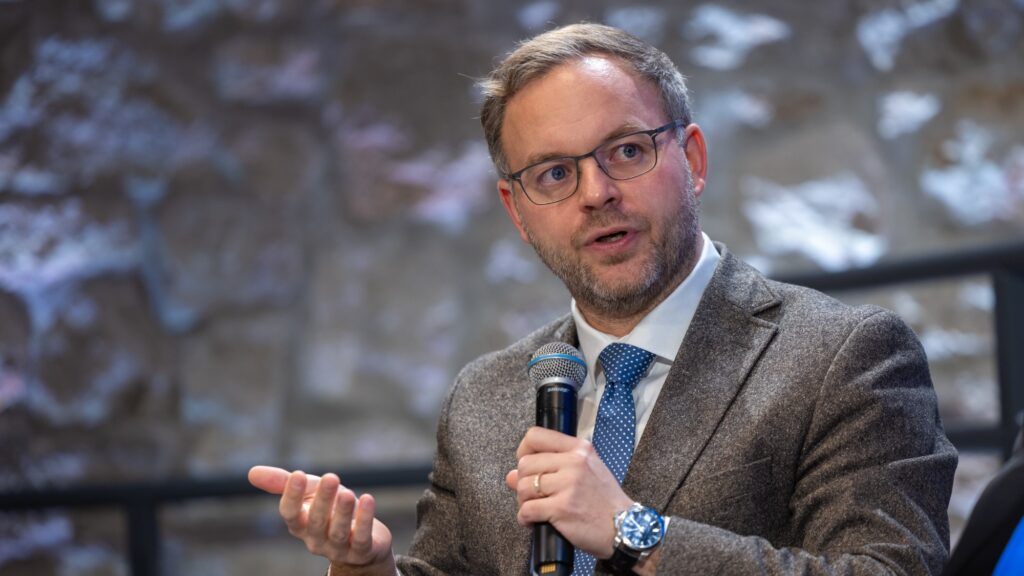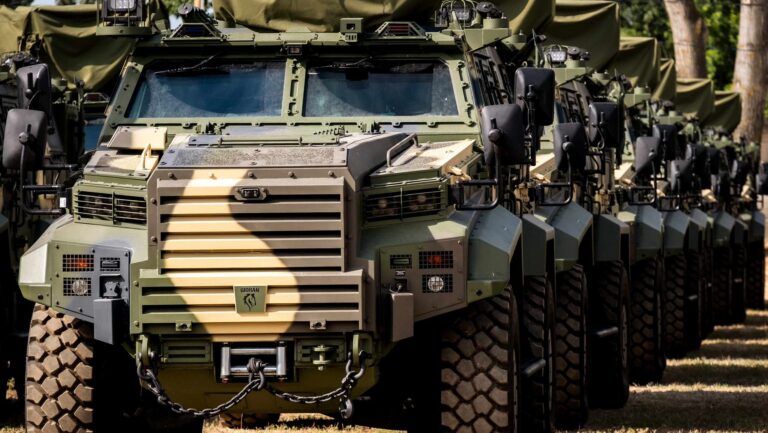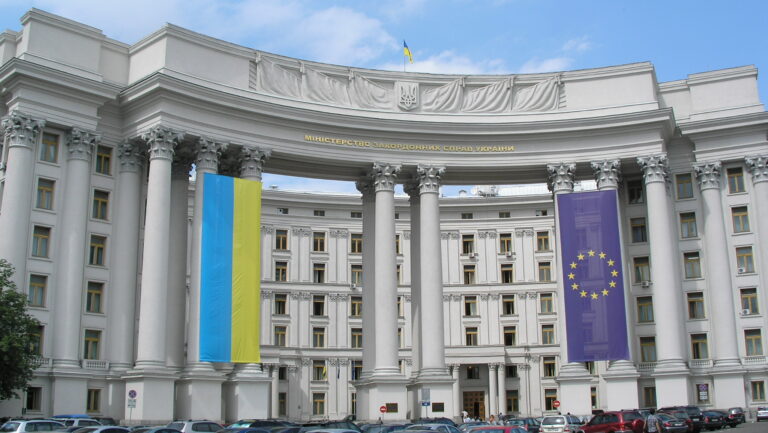One of the youngest states in Europe, the Slovak Republic celebrated its thirtieth year of independence on 1 January 2023. The disintegration of Czechoslovakia occurred as a result of a pact made behind closed doors by the then-reigning political elite, primarily Václav Klaus from the Czech and Vladimír Mečiar from the Slovak side. A referendum was not held on the fate of Czechoslovakia, presumably because the majority of its population did not want the federal state to fall, even though the recession and the increase in unemployment, high inflation, and the strengthening of nationalism rapidly destroyed the previously existing social cohesion. Although nationalism originating from above tried to paint the separation of the Slovaks from the Czechs as the last chapter in the Slovak people’s centuries-long struggle for independence, the citizens of the new state may have felt short-changed for many years by the fact that the most important decisions concerning them were now made in Bratislava and not in Prague.
The first years of the independent Slovak Republic were all about failures. While the Czech Republic embarked on the path of democratic development and tried to become an integral part of Western Europe at breakneck speed, an anti-democratic state with mafia features was being built in Slovakia, which kept performing a peacock dance between East and West. In the person of Vladimír Mečiar, there was a robust and characterful prime minister at the helm of the government, for whom any means were acceptable to achieve his goals.
A centralized country emerged, where the implementation of democratic norms and the establishment of the division of power were realized mainly on paper only. In his 1997 study on illiberal systems, Fareed Zakaria even cited Slovakia as an example of a country that lacked a system of checks and balances, and where fundamental freedoms of the population were not fully enforced.1 It is no coincidence that of the Visegrád Group countries, only Slovakia did not receive an invitation to join NATO in the 1990s, even though its expenditures on national defence exceeded the two per cent GDP contribution expected by the organization. Moreover, Slovakia, without regard to its economic difficulties, allocated the most generous funding to the army—as a proportion of its GDP—of any Visegrád country between 1993 and 1998. While in the first year of its independence, this spending amounted to two per cent of GDP; in 1995 it was 3.2 per cent; in 1996, 3 per cent; and in 1997, 2.3 per cent. The significant decrease in military expenditure coincided with the failure to obtain a NATO invitation and the weakening of the Mečiar government. The fact that the Czech Republic, Poland, and Hungary became part of the organization meant a severe loss of prestige for Mečiar, which also contributed to the subsequent downfall of his system.

Czechoslovakia was considered one of the most developed countries of the former Eastern Bloc. In addition to the heavy industry typical of former communist countries, it also had excellent light and food industries. At the same time, after the fall of the Iron Curtain, these sectors needed to be restructured for the capitalist market economy, which proved to be extremely difficult, sometimes even impossible. It was a bitter experience to find that transnational companies often abused their position and the vulnerability of the post-communist market actors. This was not always the case—think of the Czech automotive company Škoda, which underwent unprecedented development thanks to its acquisition by the German Volkswagen Group. At the same time, in many cases, large transnational companies appeared as investors, acquired factories in Eastern Europe for pennies, and then downsized or even closed them. Instead of developing, expanding, and producing, they sought to rule new markets by eliminating potential local competitors.
It was no different in Slovakia, where there was a lack of entrepreneurs with sufficient financial backing. Capital, and thus opportunities, could be obtained only by those to whom the banks loaned the necessary funds to establish firms or acquire assets. Beyond a certain level, it was within the high political actors’ grace to decide who and what project would be subsidized.
The prime minister of the country, Vladimír Mečiar, was the top decision-maker. Consequently,
from the first moment of the birth of Slovakia, most of the country’s economic power fell into the hands of a narrow elite through a guided privatization process.
In many cases, however, the new owner could not profitably operate the companies within the framework of the capitalist market economy. Many firms went bankrupt; others were resold. The profits, however, did not land in the central bank, but in the accounts of the elite, who had acquired ownership rights and were close to politicians. An excellent example of this process is the fate of Slovakia’s largest steel producer VSŽ Košice. Despite being one of the country’s strategic enterprises, it was sold for a token sum to Alexander Rezeš, who at that time was one of the main political allies of the prime minister. Under his management, the corporation almost went bankrupt, and was only saved through its acquisition by the American company U.S. Steel. According to the law, however, Rezeš’s role was legal, so nothing threatened him in keeping his wealth.2
There were problems not only in the economy but also in the field of social cohesion. The government implemented a series of anti-minority measures, which primarily targeted the Hungarian and Roma populations. School principals were laid off, a discriminatory language law was adopted, and even the introduction of alternative education was on the table, which aimed to ruin the generally well-functioning Hungarian school network system built in Czechoslovakia during communist times. Anti-Hungarian sentiment could be observed both inside and outside the country. The Hungarian–Slovak basic treaty, signed in Paris3 in 1995 by Gyula Horn and Vladimír Mečiar, did not alleviate the neuralgic relationship. How tense the situation between the two nations was can be strikingly illustrated by the fact that Mečiar even raised the idea of a population exchange4 between the countries. His former coalition partner, Ján Slota, at a meeting held in 1999, threatened—admittedly in an intoxicated state—to ‘go to Budapest with tanks’.5 The emergence of new political actors was needed at the time to ease the tension in Slovakia’s domestic and foreign politics. The population did not have to wait long for that.
We can talk about Slovakia as a fundamentally democratic state only since the 1998 elections, which brought about a real turn in the country’s political life. Although Mečiar’s party, the Movement for a Democratic Slovakia (HZDS), received the most votes in the elections,6 it could not obtain a majority in the Slovak National Council, even with the help of its formerly loyal ally, the Slovak National Party (SNS). The era marked by Vladimír Mečiar ended.
As a result of the elections, a broad, right- wing coalition government was formed. The Hungarian Coalition Party became a strong pillar of it thanks to its fifteen representatives7 in the 150-member legislature. The pursuit of common aims alleviated the tensions between ethnic groups and led to the decline of state nationalism. The new prime minister, Mikuláš Dzurinda, had to make up for a five-year lag with respect to regional competitors. He was convinced that improving the official Slovak– Hungarian relationship could help him achieve his political goals. The most obvious exampleof this improvement, both economically and symbolically, was the reconstruction of the Mária Valéria Bridge connecting Štúrovo (SK) and Esztergom (HU), which had been destroyed during the Second World War.8
Privatization continued under Dzurinda’s premiership too, but at that time, the state acquired real income from selling its assets. According to an ICEG-EC study, ‘Revenues from traditional privatisation methods were higher in 2002 than in the previous ten years in the aggregate. The sale of the SPP (Slovak Gas Company) alone generated more income than any traditional sale between 1992 and 2001.’9
The eight years of Dzurinda’s governance can still be considered one of the most successful periods in the country’s three-decade history, primarily due to its performance on the international stage. Following the Czech Republic (1995), Hungary (1996), and Poland (1996), Slovakia became a member of the OECD in 2000.10 Four years later, the country joined the European Union and NATO.11
After eight years, the population decided to elect new leaders. In the parliamentary elections of 2006, the right-wing coalition lost and a socialist prime minister, Robert Fico, stepped in. Although it was mathematically possible to form another alliance, he decided to govern with ex-PM Vladimír Mečiar and Ján Slota (SNS), who were the ones responsible for the country’s failure in the 1990s. Slovakia’s economic development remained unbroken for one more year. However, the financial and economic crisis of 2008 significantly reduced its performance; between 2007 and 2009, GDP fell by more than 15 per cent. The ‘Tatra Tiger’, which in 2007 could boast of more than 10 per cent growth, was tamed to a kitten by 2009. Slovakia also became the first and so far only country in the V4 to change its official currency from the koruna to the euro. This contributed to the establishment of economic stability, but at the same time, it took away the state’s independent monetary room for manoeuvring. The change of government in 2006 was detrimental not only to the economy but also to the situation of national minorities. During this election cycle, several anti-Hungarian incidents occurred, such as the abuse of university student Malina Hedvigová12 in Nitra, or the beating of DAC supporters in Dunajská Streda by law enforcement units.13 Unfriendly acts were also directed towards Hungary at an official level. These included the refusal to allow Hungarian President László Sólyom to enter Slovakia and the abolition of the institution of dual citizenship, which still has particular relevance concerning bilateral relations.
Presumably, these events also contributed to the domestic political turn in 2010. In the 2010 parliamentary elections, SMER- SD again achieved an overwhelming victory and obtained 34.80 per cent of the votes cast. Due to the lack of a coalition partner, Fico could not continue governing and was forced into opposition. Again, a broad right-wing coalition came to power, headed by Iveta Radičová, the country’s first woman prime minister. The government was made up of four parties, including the Hungarian–Slovak joint venture Most-Híd, led by Béla Bugár, the liberal SAS of Richard Sulík, the SDKÚ-DS of Mikuláš Dzurinda, and the KDH led by Ján Figeľ. Thus a wide-ranging formation aiming to overcome Christian–liberal and even ethnic antagonisms was born. However, they failed in less than two years. This was because there was no unity within the government regarding the European Financial Stability Facility (EFSF)14 intended to help Greece and Portugal after the crisis. Due to intense international pressure, PM Radičová tried to get the EFSF accepted by linking the vote on it with a confidence vote of the government. Her plan did not work, and the SAS overthrew the government. The irony of the situation is that the EFSF was adopted the next day by opposition votes, and even the president ratified it on the same day.15 The price was early elections, which Robert Fico’s party won with a large majority in 2012, enabling it to govern alone.16
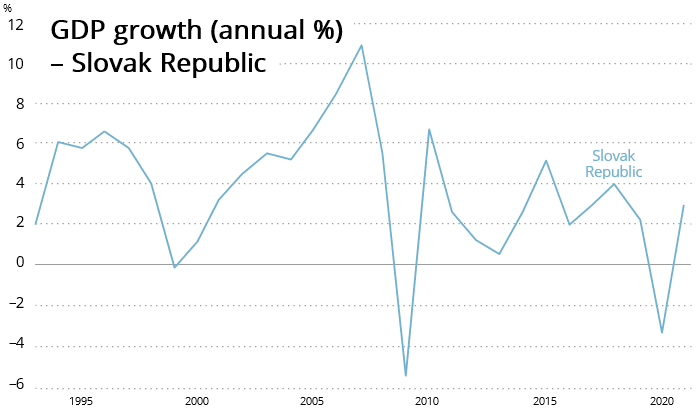
Four years later, in 2016, SMER-SD won a mandate to remain in power, but only in a coalition government. The Slovak National Party (SNS), known for its anti-Hungarian rhetoric and corruption scandals, and, somewhat surprisingly, the Slovak–Hungarian mixed party,
Most-Híd, became its partners. Although all three actors participating in the coalition initially had a bad relationship with the Hungarian government, the antipathy between the two countries gradually eased, and cooperation within the framework of the V4 intensified. Their common rejection of migration and mandatory resettlement quotas strengthened their partnership. Although there were cases which, in a different historical situation, would have led to the escalation of conflicts between the two countries—e.g., the Slovak law penalizing the singing in public of national anthems of other countries—Hungarian–Slovak relations at those times were more peaceful and cooperative than ever before.
In February 2018, Slovakia was rocked by a double murder, which turned the country’s political life upside down. Investigative journalist Ján Kuciak and his fiancée, Martina Kušnírová, were found shot dead in their home. Almost immediately, a series of nationwide demonstrations began, in which the population demanded a major political change. Due to the intense public pressure, the minister of the interior stepped down. The prime minister followed shortly thereafter. Robert Fico was replaced by Peter Pellegrini, who, despite his popularity, could not retain the reins of power for himself and his party. The 2020 election was disastrous for the Hungarian community too, as for the first time in thirty years, none of the parties representing them entered the Slovak legislature. This was the result of the disunity that had characterized the Hungarian community for over a decade.
As a result of the 2020 elections, a broad coalition with a constitutional majority was formed. The prime minister became Igor Matovič, head of the party Obyčajní ľudia a nezávislé osobnosti (Ordinary People and Independent Personalities). Despite his landslide victory, he was forced to resign after one year in office. The reason was the procurement of the Russian-made Sputnik V vaccine, carried out by the PM without consulting his coalition partners. Matovič argued in vain that the pandemic was raging, people were dying, and Western vaccines were unavailable. His coalition partner, SAS,
demanded his resignation. The government was transformed, and Eduard Heger, his former right-hand man, became the new prime minister. For a while, it seemed that the new formation would be able to last until the end of the cycle, but in the summer of 2022, SAS switched to the opposition. On 15 December 2022, the government lost a confidence vote in the National Council: 78 representatives out of 150 voted for its fall.17 At the same time, the opposition is growing stronger and demanding early elections. SMER-SD initiated a referendum on shortening the election cycle. (Editor’s note: It took place in January 2023, but the proposal failed, as the turnout did not reach the 50 per cent threshold.)
The reason for the current situation is to be found neither in the international environment nor in public pressure. Slovakia is again facing a domestic political crisis simply because of the irreconcilable egos of two of its controversial party leaders, former PM Igor Matovič and former Deputy PM for Economy Richard Sulík. The stakes are high since, in the case of early elections, not just the careers of both politicians may end, but the country’s foreign policy might take a U-turn. The latter could give a new impetus to the Visegrád cooperation and Hungarian–Slovakian bilateral relations, which have cooled significantly in the last two years. Slovakia has turned thirty years old.
Whether the past three decades can be considered a success story remains an open question. The Slovak nation achieved the independence it had always wanted. It is highly doubtful whether the population has gained anything else from the breakup of the federal state. Compared to the Czech Republic, the difference between the two countries has grown significantly at the expense of Slovakia as regards GDP per capita. While in this field, in 1993, the Czech Republic surpassed Slovakia by $854; today, the difference is 6.35 times bigger, that is $5,429.18 Moreover, the regional differences in Slovakia are huge. While Bratislava and its surroundings are developing at breakneck speed, small eastern settlements are becoming depopulated. A significant number of young citizens go abroad, from where they do not even intend to return. Their final destination is often not Vienna, Berlin, or London, but Prague or Brno.
Universities in the Czech Republic have become top-rated among Slovak secondary-school students. At the same time, it is interesting to observe that a kind of nostalgia is developing, especially among the youth, for the former federal state. For them, the term ‘Czechoslovakia’ is beginning to represent value again. Linguistic and cultural proximity, good neighbourly relations, and the previous peaceful separation constitute prerequisites for these sentiments. The relationship between the two countries is impeccable, which is atypical for disintegrated successor states. Whether the separation made sense in light of the last three decades is questionable. Presumably, if the people had been allowed to decide thirty years ago, they would have made another choice. However, all of this is history, with which both sides have learned to live together peacefully.
NOTES
1 Fareed Zakaria, ‘The Rise of Illiberal Democracy’, Foreign Affairs (November/December 1997), 22–43, www.foreignaffairs.com/articles/1997-11-01/rise-illiberal-democracy.
2 ‘Hogyan lett milliomos a BMW-s gázoló?’ (How Someone Running down a Pedestrian with his BMW Could Become a Millionaire?), Index.hu (24 August 2012), https://index.hu/belfold/2012/08/24/szlovakia_egyik_leghiresebb_csaladjanak_tagja/, accessed 29 December 2022.
3 ‘20 éves az alapszerződés’ (The Basic Treaty Is Twenty Years Old), Új Szó (28 March 2015), https://ujszo.com/kozelet/20-eves-az-alapszerzodes, accessed 20 December 2022.
4 ‘Meciar ötlete a státustörvény?’ (Is the Status Law Meciar’s Idea?), Népszabadság (20 March 2002), http:// nol.hu/archivum/archiv-53743-38321, accessed 30 December 2022.
5 The recording is available at www.youtube.com/ watch?v=Xv5yeMQoUt4, accessed 30 December 2022; also see ‘Slota papírtankjai’ (Slota’s Paper Tanks), Új Szó (9 March 1999), https://library.hungaricana.hu/hu/view/UjSzo_1999_03/?pg=93&layout=s, accessed 30 December 2022.
6 ‘Výsledky parlamentných volieb 1998’, https://volby. sme.sk/parlamentne-volby/1998/vysledky, accessed 30 Decemebr 2022.
7 ‘Kompletné výsledky volieb: Parlamentné voľby 1998’, SME (12 September 2002), https://domov.sme.sk/c/660379/kompletne-vysledky-volieb-parlamentne- volby-1998.html, accessed 30 December 2022.
8 ‘Európa ünnepe Párkányban és Esztergomban’ (Europe’s Celebration in Párkány [Štúrovo]
and Esztergom) (12 October 2001), https://library.hungaricana.hu/hu/view/ UjSzo_2001_10/?pg=204&layout=s, accessed 30 December 2022.
9 Máté Tóth et al., ‘A privatizáció összehasonlító elemzése a csatlakozó és egyes átalakuló gazdaságokban’ (Comparative Analysis of the Privatization in the Transforming Economies of Some EU Accession Countries), International Center for Economic Growth – European Center (Budapest, 2003), 50, http://icegec-memo.hu/hun/kutatasi_projektek/privatization.pdf, accessed 17 December 2022.
10 Ministry of Finance of the Slovak Republic, ‘OECD’, MFSR.sk, www.mfsr.sk/sk/medzinarodne-vztahy/ medzinarodne-institucie/medzinarodne-organizacie/ organizacia-hospodarsku-spolupracu-rozvoj-oecd/ organizacia-hospodarsku-spolupracu-rozvoj-oecd. html, accessed 17 December 2022.
11 European Union, ‘Slovakia’, European-union.europa.eu, https://european-union.europa.eu/principles-countries-history/country-profiles/slovakia_en, accessed 17 December 2022; and NATO, ‘Seven New Members Join NATO’, NATO.int, www.nato.int/docu/ update/2004/03-march/e0329a.htm, accessed 17 December 2022.
12 ‘Nyitrán megvertek egy magyar diáklányt’ (A Hungarian Female Student Was Beaten in Nyitra), Új Szó (26 August 2006), https://library.hungaricana.hu/hu/view/UjSzo_2006_08/?pg=508&layout=s, accessed 20 December 2022.
13 ‘Nem volt ok a rendőrrohamra’ (There Was No Reason for the Police Raid), Új Szó (3 November 2008), https://library.hungaricana.hu/hu/view/UjSzo_2008_11/?pg=0&layout=s, accessed 20 December 2022.
14 European Commission, ‘European Financial Stability Facility’, https://economy-finance.ec.europa.eu/eu-financial-assistance/euro-area-countries/european-financial-stability-facility-efsf_en, accessed 20 December 2022.
15 ‘Gašparovič expresne ratifikoval euroval’, Noviny.sk, www.noviny.sk/slovensko/95829-gasparovic-expresne-ratifikoval-euroval, accessed 20 December 2022.
16 ‘Výsledky parlamentných volieb 2012’, SME.sk, https://volby.sme.sk/parlamentne-volby/2012/vysledky, accessed 28 December 2022.
17 ‘Padla vláda: Prezidentka Čaputová odvolá Hegerovu vládu v piatok’, SME.sk (15 December 2022), https://domov.sme.sk/c/23094934/vyslovenie-nedovery-vlada-odvolavanie-heger-matovic-sulik.html.
18 The World Bank, ‘GDP per capita (current USD) – Slovak Republic, Czechia’, Worldbank.org, https://data.worldbank.org/indicator/NY.GDP.PCAP. CD?end=2021&locations=SK-CZ&start=1993, accessed 31 December 2022.

